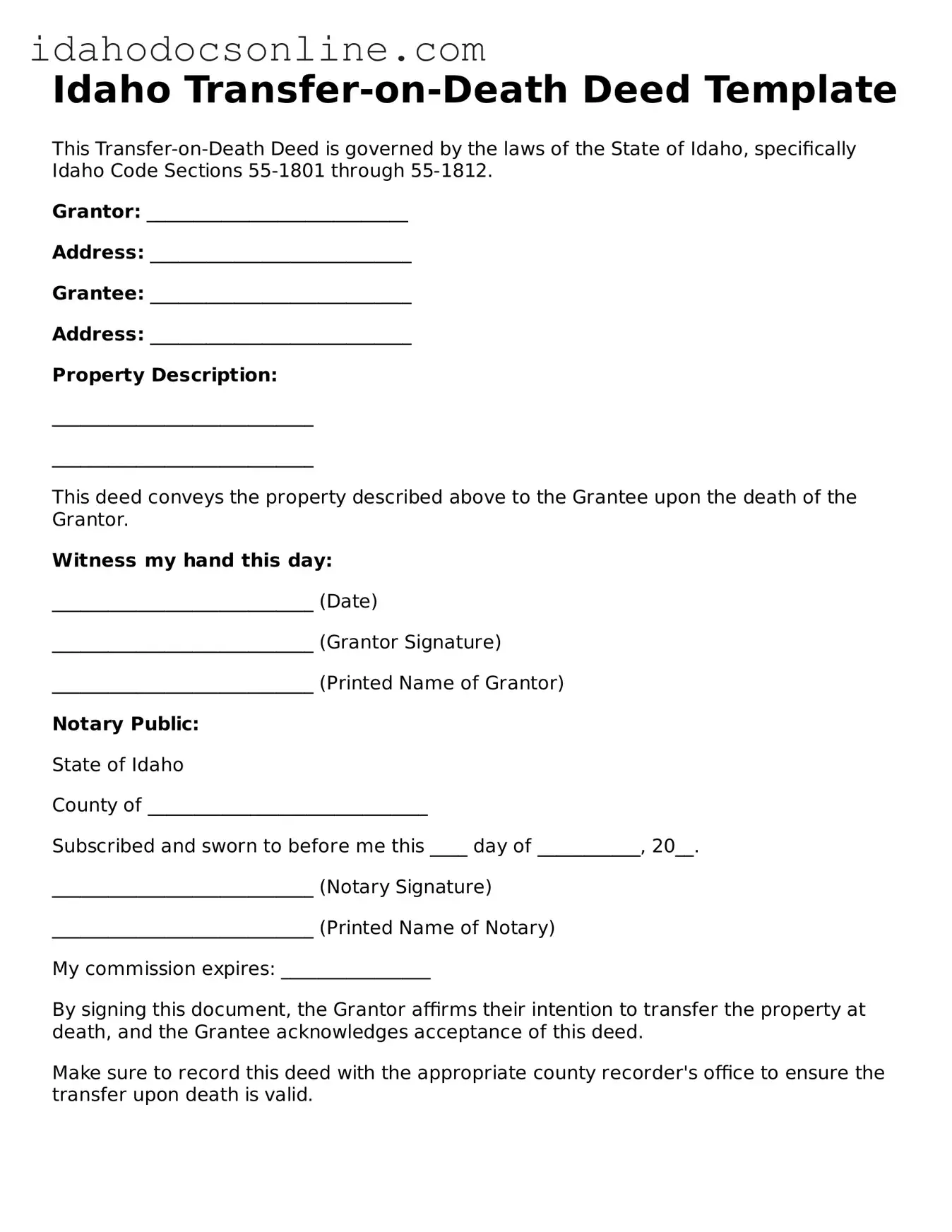Idaho Transfer-on-Death Deed Template
This Transfer-on-Death Deed is governed by the laws of the State of Idaho, specifically Idaho Code Sections 55-1801 through 55-1812.
Grantor: ____________________________
Address: ____________________________
Grantee: ____________________________
Address: ____________________________
Property Description:
____________________________
____________________________
This deed conveys the property described above to the Grantee upon the death of the Grantor.
Witness my hand this day:
____________________________ (Date)
____________________________ (Grantor Signature)
____________________________ (Printed Name of Grantor)
Notary Public:
State of Idaho
County of ______________________________
Subscribed and sworn to before me this ____ day of ___________, 20__.
____________________________ (Notary Signature)
____________________________ (Printed Name of Notary)
My commission expires: ________________
By signing this document, the Grantor affirms their intention to transfer the property at death, and the Grantee acknowledges acceptance of this deed.
Make sure to record this deed with the appropriate county recorder's office to ensure the transfer upon death is valid.
